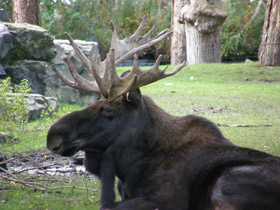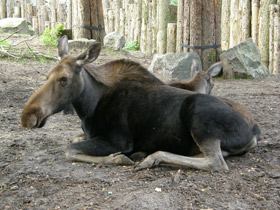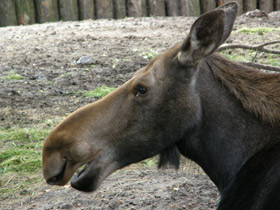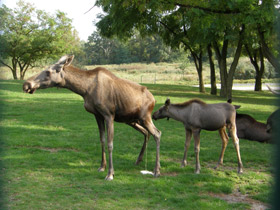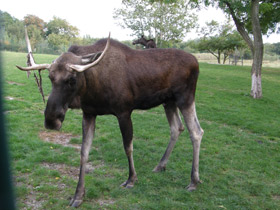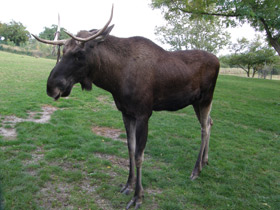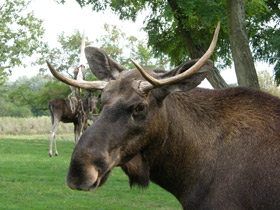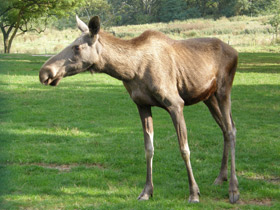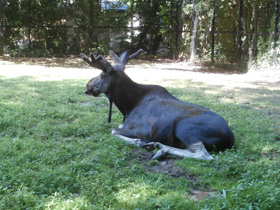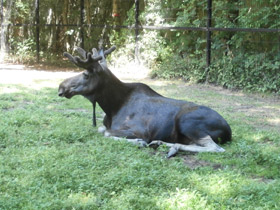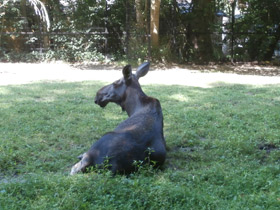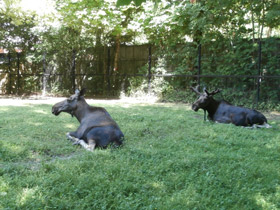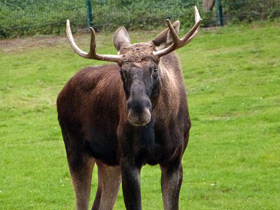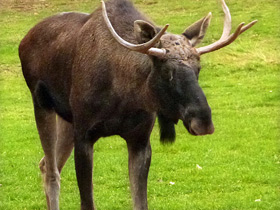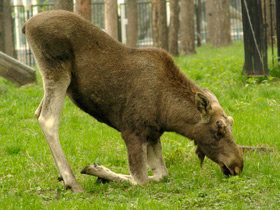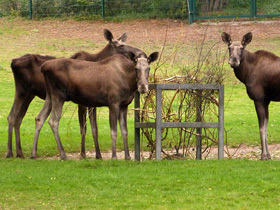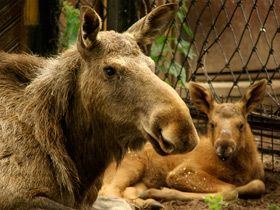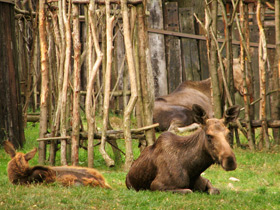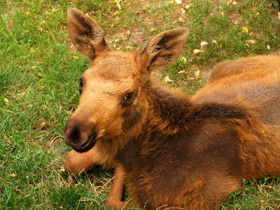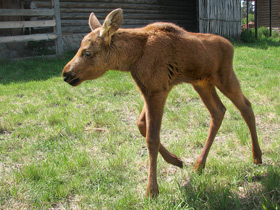The moose or Eurasian elk Alces alces
The moose (North America) or Eurasian elk (Europe) is the largest extant species of the deer family: the body length of these animals reaches 3 meters, height at the shoulders is about 2.3 m and weight ranges from 300 to 600 kilograms. The Eurasian elk’s appearance is peculiar; it has short and massive body, slender long legs, massive body, a short, thick neck and humped shoulders that support a large head with long, bulbous muzzle, long agile ears and overhanging upper lip. Another interesting feature of the elk is a flap of soft furred skin (called the bell) hanging under the animal’s neck and having a length of 25 to 40 cm. Males carry gigantic palmate antlers, which can span 180 cm tip to tip, and weigh as much as 30 kg. These ancient animals have a distribution in the boreal forests of the Northern Hemisphere, in Europe, Asia, and North America. Elks depend on water, such as swamps, quite rivers and lakes, where they feed on aquatic plants and hide from the heat in summer months. In winter, elks inhabit coniferous and mixed forests with dense understory. These ungulates’ diet includes woody plants, herbs, grasses, mosses, lichens, berries, and mushrooms. Elks can run fast (reaching a speed of 60 km per hour) and are strong swimmers. When feeding, they often dunk their heads underwater, and can keep their heads submerged for more than one minute. Elks are solitary or live in small groups of 3 to 4 individuals during most part of the year but in winter, they may gather in larger groups consisting of 5 to 8 animals. Bulls fight during the mating season and stronger bulls sometimes kill their competitors. Unlike most of the deer species, elk males do not have harems and mate with only one female. Gestation lasts from 225 to 240 days with female typically giving birth to one calve but two are not uncommon. The calves are able to stand in a few minutes after birth and can run around after three days. In the first days they lie quietly hiding in the forest but by the age of one week start following their mother. During 3.5 to 4 months the calves feed on mother’s milk that is much higher in fat than the cow’s milk. The calves weigh 6 to 15 kilograms at birth but they grow fast and reach the weight of 120 to 130 kg by fall. Young elk males grow their first set of antlers after one year.

















